How to Transform Luxury Bed Linens for a Hotel-Like Experience
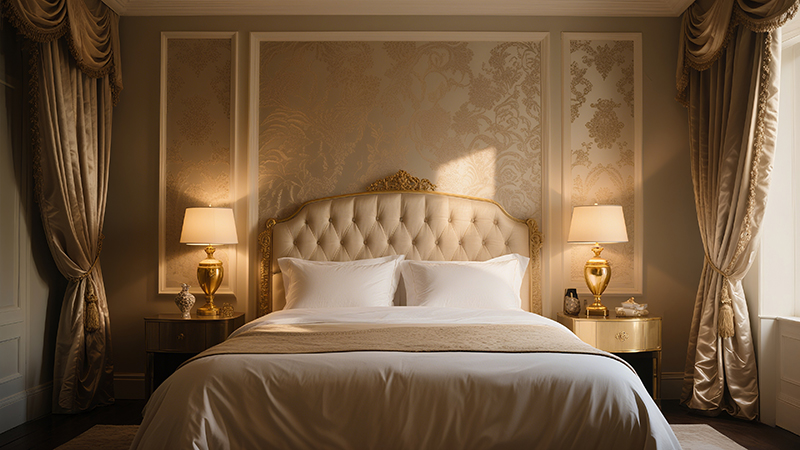
Contents
- Introduction
- 1. Why Luxury Bed Linens Are a Worthy Investment (Beyond the Price Tag)
- 2. The Thread Count Myth: Why More Isn’t Always Better
- 3. Material Showdown: Which Fabric Reigns Supreme?
- 4. Weave Patterns: How They Change the Feel
- 5. Color Psychology: Why Hotels Stick to Neutrals
- 6. The Hotel Layering Hack: How to Create That “Cloud-Like” Bed
- 7. Pillow Talk: Why Your Pillow Matters as Much as Your Sheets
- 8. Maintenance 101: Keep Luxury Linens Feeling New
- 9. Where to Buy: Luxury Linens Without the Hotel Markup
- 10. The Pillowcase Upgrade: A Small Change with Big Impact
- Conclusion: Your Bed, Reimagined
Introduction
Step into a five-star hotel, and one of the first things that strikes you is the bed—a cloud-like sanctuary promising restful sleep. That luxurious feeling isn’t merely a product of room service or panoramic views; it begins with the bed linens. For years, travelers have pondered: how can I replicate that hotel-quality comfort in my own bedroom?
The answer lies in understanding what truly makes luxury bed linens exceptional. It’s not just about splurging on the most expensive set—it’s about knowing the right materials, weaves, and care techniques that turn ordinary sheets into a nightly retreat. In this guide, we’ll break down everything you need to know to curate a bedroom that rivals your favorite boutique hotel, from debunking thread count myths to mastering the art of layering. Whether you’re a hot sleeper, a fan of soft textures, or simply looking to elevate your daily routine, these insights will help you invest in bed linens that deliver both luxury and longevity.
1. Why Luxury Bed Linens Are a Worthy Investment (Beyond the Price Tag)
You might think, “They’re just sheets—why spend more?” But the truth is, your bed linens play a far bigger role in your life than you realize. Consider this: the average person spends about 26 years of their life sleeping. That’s over 9,490 days in direct contact with your sheets. Scratchy, ill-fitting, or low-quality linens don’t just ruin a night’s sleep—they gradually erode your overall well-being.
Luxury bed linens, by contrast, offer tangible benefits:
- Better sleep quality: High-quality fabrics regulate body temperature, reducing night sweats and restlessness. A 2023 study by the National Sleep Foundation found that 75% of participants reported improved sleep with “soft, breathable bedding.”
- Durability: Premium materials like long-staple cotton or linen can last 5–10 years with proper care, outperforming cheap sheets that pill or tear within months.
- Daily joy: The tactile pleasure of sliding into smooth, crisp sheets transforms a mundane routine into a small daily luxury—a mental boost that sets a positive tone for the next day.
Hotels understand this implicitly. They invest in quality linens because they know a comfortable bed is the cornerstone of a guest’s experience. Your home deserves the same level of care.
2. The Thread Count Myth: Why More Isn’t Always Better
Walk into any home goods store, and you’ll see sheets marketed with thread counts (TC) like 1,000 or even 1,500. It’s easy to assume higher = better, but this is one of the biggest myths in bedding.
- What thread count actually means: It’s the number of threads woven into one square inch of fabric, counting both horizontal (weft) and vertical (warp) threads. But here’s the catch: beyond a certain point, higher TC doesn’t improve quality—it can even hurt it.
- The sweet spot: Most experts agree that 300–600 TC is ideal. Fabrics with 800+ TC often use thinner, weaker threads to inflate the count, resulting in a heavy, less breathable material that pills faster.
- Why brands push high TC: It’s a simple marketing tool. Consumers unfamiliar with bedding quality latch onto a concrete number, making it easy to justify higher prices.
- What matters more: As we’ll explore next, material, weave, and finish have a far bigger impact on feel and durability than thread count alone.
Think of it like wine: a 50 bottle isn’t always better than a 20 one, and a 1,000 TC sheet isn’t inherently better than a 400 TC sheet made with superior cotton.
3. Material Showdown: Which Fabric Reigns Supreme?
The material of your bed linens is the single most important factor in their feel, durability, and suitability for your sleep style. Let’s break down the top contenders:
Egyptian Cotton: The Gold Standard
Egyptian cotton is revered for its long staple fibers (1.5–2 inches, compared to 0.75–1 inch in regular cotton). These longer fibers allow for smoother, stronger weaves that resist pilling and get softer with each wash.
- Best for: Those who prioritize softness and durability.
- Look for: Labels like “Giza 45” or “Giza 88”—these are the finest grades of Egyptian cotton, grown in the Nile Delta’s nutrient-rich soil.
- Price range: 150–500 for a sheet set (worth the splurge for daily use).
Linen: The Breathable Workhorse
Linen, made from flax fibers, is beloved for its rustic charm and unbeatable breathability. It’s naturally moisture-wicking, making it perfect for hot sleepers or warm climates.
- Pros: Gets softer over decades, requires minimal ironing (wrinkles are part of its charm), and is biodegradable.
- Cons: Initially stiffer than cotton; takes 3–5 washes to reach peak softness.
- Best for: Summer, hot sleepers, or those who prefer a casual, lived-in look.
Bamboo: The Eco-Friendly Contender
Bamboo linens are made from regenerated bamboo fibers, known for their silky texture and eco-credentials (bamboo grows quickly without pesticides).
- Pros: Hypoallergenic, naturally antimicrobial, and softer than cotton for sensitive skin.
- Cons: Less durable than cotton or linen; may pill after 1–2 years with frequent use.
- Best for: Allergy sufferers, those with sensitive skin, or anyone prioritizing sustainability.
Blends: The Best of Both Worlds
Many luxury brands offer blends to balance benefits:
- Cotton-linen: Combines cotton’s softness with linen’s breathability—ideal for year-round use.
- Cotton-bamboo: Adds silkiness to cotton’s durability, great for cold sleepers who want warmth without heaviness.
| Material | Softness | Breathability | Durability | Best For | Price Range |
| Egyptian Cotton | ★★★★★ | ★★★★☆ | ★★★★★ | All sleepers, daily use | 150–500 |
| Linen | ★★★☆☆ | ★★★★★ | ★★★★☆ | Summer, hot sleepers | 120–400 |
| Bamboo | ★★★★☆ | ★★★☆☆ | ★★☆☆☆ | Allergy sufferers | 80–300 |
| Cotton-Linen | ★★★★☆ | ★★★★☆ | ★★★★☆ | Year-round, versatile | 180–450 |
4. Weave Patterns: How They Change the Feel
The weave—the way threads are interlaced—determines a fabric’s texture, weight, and breathability. Here’s how the most popular weaves stack up:
Sateen: Silky and Luxurious
Sateen is woven with a pattern that exposes more thread surfaces, creating a smooth, glossy finish reminiscent of satin (but made with cotton or other natural fibers).
- Feel: Silky, drapey, and warm.
- Best for: Cold sleepers, winter, or anyone who loves a “luxe” feel.
- Note: Less breathable than percale; may feel heavy in hot weather.
Percale: Crisp and Cool
Percale uses a simple crisscross weave (one over, one under), resulting in a lightweight, crisp texture—think hotel sheets.
- Feel: Cool, crisp, and matte.
- Best for: Hot sleepers, summer, or those who prefer a “freshly laundered” feel.
- Note: Wrinkles more easily than sateen; requires ironing for a polished look (optional).
Flannel: Cozy and Warm
Flannel is a brushed cotton weave, with fibers raised to create a fuzzy surface that traps heat.
- Best for: Winter, cold climates, or anyone who loves a cozy, blanket-like feel.
- Note: Sheds slightly in the first few washes; avoid fabric softener (it clogs the fuzzy fibers).
5. Color Psychology: Why Hotels Stick to Neutrals
Step into a luxury hotel, and you’ll rarely see bold colors or busy patterns on the bed. Neutral tones—white, ivory, beige, light gray—dominate, and for good reason:
White: The Ultimate in Clean Luxury
White bedding is a hotel staple because it:
- Signals cleanliness: Even if slightly stained, white appears fresher than colored linens (hotels bleach white sheets to maintain this illusion).
- Feels timeless: White never goes out of style, ensuring the room feels elegant for years.
- Versatile: Pairs with any decor, from minimalist to bohemian.
Soft Neutrals: For Those Who Fear Stains
If white feels high-maintenance, opt for:
- Charcoal gray: Hides stains, adds a modern edge, and feels cozy in winter.
- Blush or ivory: Warmer than white, softens the room, and still reads as “luxury.”
- Light blue: Calming, reminiscent of water or sky, and subtly adds color without being bold.
What to Avoid
Bright colors or busy patterns can disrupt relaxation. Studies show that bold reds or oranges increase heart rate, while clashing patterns overstimulate the brain—both bad for sleep. Stick to solids or subtle textures (like a woven stripe) for a hotel-like vibe.
6. The Hotel Layering Hack: How to Create That “Cloud-Like” Bed
Ever wondered why hotel beds feel so perfectly plush? It’s all in the layering. Hotels design their beds to be adjustable—so guests can add or remove layers without sacrificing comfort. Here’s how to replicate it:
- Fitted Sheet: Start with a high-quality fitted sheet (10–15 inch deep pockets to fit thick mattresses) in cotton or linen.
- Flat Sheet: Yes, even if you think they’re unnecessary. The flat sheet protects the duvet from sweat, oils, and dirt, extending its lifespan. Tuck it tightly at the foot for a crisp look.
- Thin Blanket: A lightweight cotton or wool blanket (folded at the foot) adds warmth for cool nights without the bulk of a duvet.
- Duvet in a Cover: Use a duvet with a 600–800 fill power (for down) or a lightweight microfiber alternative. The cover should match your sheets for cohesion.
- Pillows: Layer 2–3 decorative pillows (20×20 inches) in complementary neutrals. Avoid overcrowding—hotel beds usually have 2–3, not 10.
- Pro tip: Fluff the duvet and pillows daily. Hotels do this between guests to maintain that “just made” look—spend 30 seconds shaking out the duvet and plumping pillows, and your bed will feel luxe all day.
7. Pillow Talk: Why Your Pillow Matters as Much as Your Sheets
Even the best sheets can’t fix a bad pillow. Hotels invest in high-quality pillows because they know support is key to a good night’s sleep. Here’s how to choose the right one:
Fill: Down vs. Synthetic vs. Memory Foam
- Down: Soft, fluffy, and moldable (made from duck or goose feathers). Best for side or back sleepers who like a plush feel. Look for “100% down” (not “down alternative”).
- Memory foam: Conforms to your head and neck, ideal for neck pain sufferers. Opt for “ventilated” memory foam to avoid overheating.
- Polyester: Affordable, hypoallergenic, but less supportive. Best for stomach sleepers (who need a flat pillow).
Loft (Height) Matters
- Side sleepers: Need a firm, high-loft pillow (5–7 inches) to fill the gap between shoulder and ear.
- Back sleepers: Medium loft (3–5 inches) to cradle the head without straining the neck.
- Stomach sleepers: Low loft (1–3 inches) to keep the spine aligned (or skip a pillow entirely).
Maintenance
- Wash pillow protectors weekly (they shield pillows from sweat and oils).
- Replace pillows every 18–24 months—old pillows lose loft and accumulate dust mites.
8. Maintenance 101: Keep Luxury Linens Feeling New
Investing in expensive sheets is pointless if you ruin them with bad care. Follow these rules to extend their lifespan:
Washing
- Temperature: Use cold water (hot water shrinks fibers and fades colors).
- Detergent: Mild, fragrance-free formulas (perfumes coat fibers, reducing softness). Avoid bleach on colored linens.
- Fabric softener: Skip it—especially for linen or flannel. It clogs fibers, making them less breathable and causing pilling.
Drying
- Tumble dry low: High heat breaks down fibers. Add wool dryer balls to speed drying and reduce wrinkles.
- Air dry: For linen or delicate blends, hang dry to preserve softness (linen gets softer when line-dried in the sun).
Rotation
- Keep 2–3 sheet sets and rotate them weekly. This gives fibers time to “relax” between washes, preventing stretching or thinning. Hotels rotate sets daily—no wonder their linens last!
9. Where to Buy: Luxury Linens Without the Hotel Markup
You don’t need to pay hotel wholesale prices to get hotel-quality linens. Here are the best brands for every budget:
Splurge-Worthy (Investment Pieces)
- Frette: A favorite of luxury hotels like The Ritz-Carlton. Their Egyptian cotton sateen sets (300–800) are buttery soft and last a decade.
- Sferra: Known for linen-cotton blends and heirloom-quality linens. Their “Giza 45” cotton sheets (250–600) are worth the splurge for daily use.
Mid-Range (Best Value)
- Brooklinen: A direct-to-consumer brand with hotel-inspired linens. Their “Luxury Sateen” set ($159) rivals high-end brands at half the price.
- Parachute Home: Offers buttery linen sheets (149–229) and crisp percale—loved by interior designers for their minimalist aesthetic.
Budget-Friendly (Under $100)
- John Lewis (UK): Their “Supima Cotton” set (£60–£90) uses long-staple cotton for softness that lasts.
- Target’s Threshold Line: Their Egyptian cotton percale set ($80) is a steal for those testing luxury linens.
- Pro tip: Shop sales! Black Friday, January clearances, and hotel liquidation sales (check sites like Hotel Surplus) often slash prices by 40–60%.
10. The Pillowcase Upgrade: A Small Change with Big Impact
Don’t overlook pillowcases—they’re in direct contact with your face for 8 hours a night. Upgrade to:
- Silk: Reduces friction, preventing hair breakage and sleep lines (celebrities swear by this).
- Egyptian cotton: Soft on skin, less absorbent than regular cotton (so your night cream stays on your face, not your pillow).
- Linen: Breathable, so you wake up less sweaty (great for acne-prone skin).
Conclusion: Your Bed, Reimagined
Creating a hotel-like bedroom isn’t about perfection—it’s about intentionality. By choosing the right materials, mastering layering, and caring for your linens, you can transform your bed into a sanctuary that supports better sleep, daily joy, and long-term well-being.
Remember: luxury isn’t about the price tag. It’s about the way your sheets feel when you slide into bed after a long day, the confidence that they’ll last for years, and the quiet pride of investing in yourself.
So audit your current linens, pick one upgrade (start with a high-quality fitted sheet—you’ll feel the difference instantly), and take the first step toward better sleep. You deserve it. After all, a good night’s sleep is the ultimate luxury—and it starts with the right bed linens.


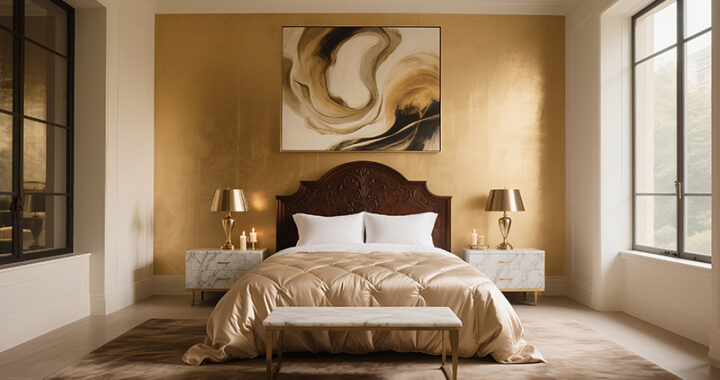 Home Decor Ideas to Make Your Home Feel Like a Luxury Hotel
Home Decor Ideas to Make Your Home Feel Like a Luxury Hotel 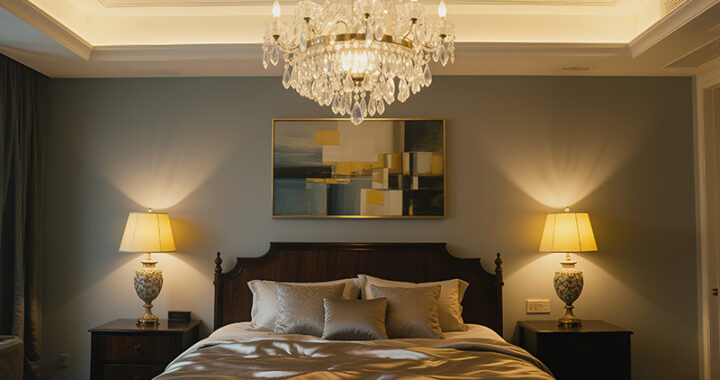 Best Luxury Accent Lighting for Every Room
Best Luxury Accent Lighting for Every Room 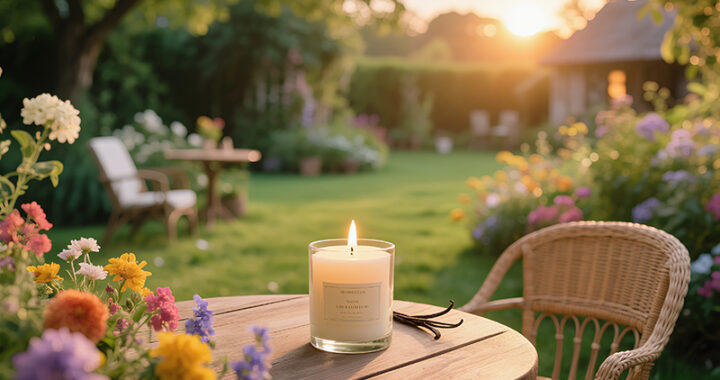 Best Luxury Candles for a Cozy and Elegant Home
Best Luxury Candles for a Cozy and Elegant Home 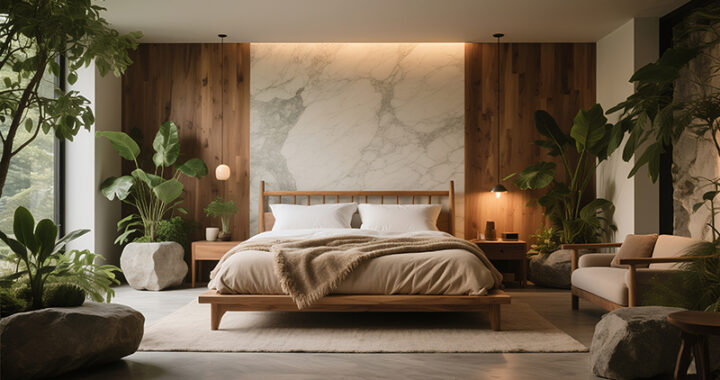 Best Luxury Bed Frames for a Stylish Bedroom
Best Luxury Bed Frames for a Stylish Bedroom 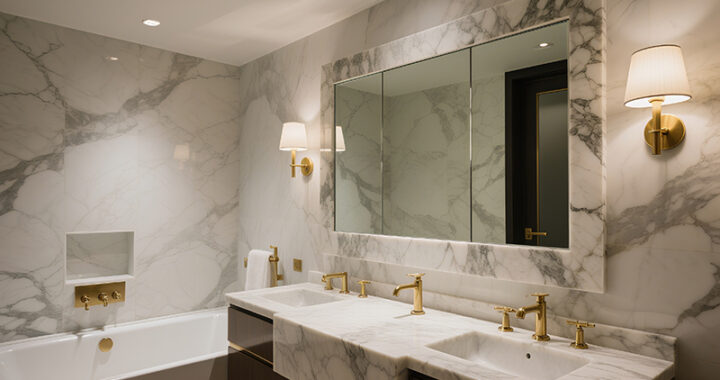 Best Luxury Bathroom Mirrors for a Stylish Touch
Best Luxury Bathroom Mirrors for a Stylish Touch 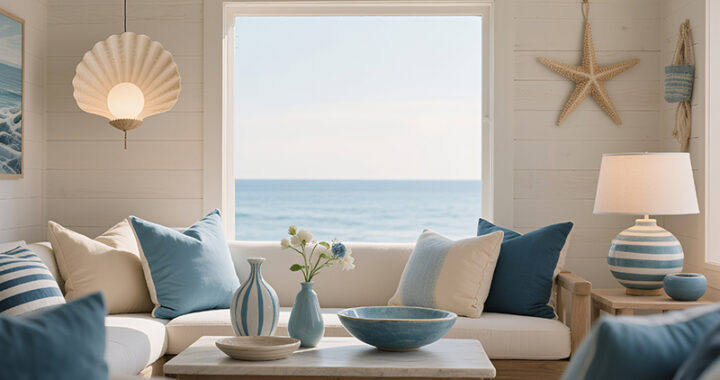 Luxury Coastal Home Decor Ideas: Elevate Your Beach House with Timeless Elegance
Luxury Coastal Home Decor Ideas: Elevate Your Beach House with Timeless Elegance